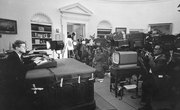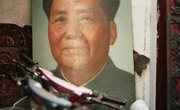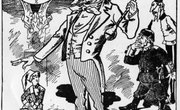France's involvement in the Civil War was a delicate issue for both the North and the South. From 1861 to 1865 the United States was in the midst of a deadly civil war without foreign involvement from other nations. Both sides sought the favor of much of Europe, but the actual involvement of these nations was minimal, especially that of France, which was in too weak of a position to provide assistance on its own.
French Neutrality
The French government took its lead from the British and declared its neutrality during the Civil War, refusing to intervene without the backing of Britain. Because of this, France was not able to openly aid either side without being seen as a belligerent. France had also officially abolished slavery in all of its territories in 1848, and French citizens would not approve of a foreign war involving slavery. Throughout the war France remained neutral and never recognized the Confederacy as a nation.
France's Attempt at Armistice
Unwilling to directly intervene in the Civil War, the French government reached out to other nations in an attempt to end the war. French President Napoleon III talked with Confederate ambassador John Slidell, and then met with representatives from England and Russia to propose a six-month armistice. England and Russia both disfavored the idea and soon talks fell apart after the North refused to discuss any armistice with the South in 1863.
Confederate Sympathies by France
The French government certainly had sympathies for the Confederacy because both regimes were aristocratic, while the North had a more democratic social and economic system that wasn't as rigidly hierarchical. France's trade prospects were also hurt because of Northern blockades of Southern ports. France wanted to intervene in order to ensure the trade of cotton, wine, brandy and silk.
France's Involvement in Mexico
Despite its intention of staying out of war with the United States, France invaded Mexico and installed its own emperor, Maximillian, in 1864. France's goal was to improve its power abroad and set up a puppet government that could perhaps aid the Confederacy during the Civil War. France also could regain some of its former colonies in the Americas by working with the Confederates. French plans were short-lived, however; in 1866 Maximillian was captured and the French were expelled from Mexico by the victorious U.S. army.
Related Articles
References
- Embassy of France in London: France and the Abolition of Slavery
- U.S. Department of State: 1861-1865: The Civil War and International Diplomacy
- U.S. Department of State: The Blockade of Confederate Ports, 1861-1865
- U.S. Department of State: French Intervention in Mexico and the American Civil War, 1861-1865
Resources
Writer Bio
Based in Chicago, Michael O'Neill is graduate of Murray State University with a Bachelor of Arts in history and political science. He has written for numerous online companies relating to culture, international affairs and state/national politics.











